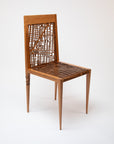
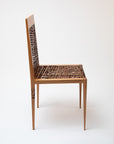
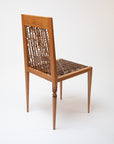
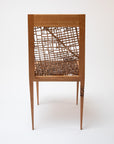
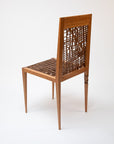
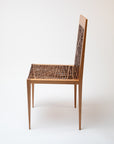
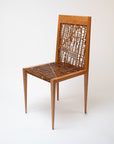
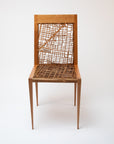
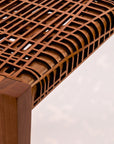
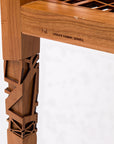
Wood Chair, Mexico City - Prototype (Cherry)
This is a one-of-a-kind early prototype. Prototypes are sold as-is and have imperfections from testing and display. They are not guaranteed to withstand regular use and are sold to be displayed as art.
This Wood Chair prototype features four maps showcasing how Mexico City has evolved over the past 240+ years. This prototype is made in Cherry.
Material: Solid Wood, Plywood
Dimensions: 18¼in L x 17in W x 37in H
Weight: 7.6lbs
Color: Cherry
Prototypes are one-of-a-kind pieces that were handcrafted during our earliest days of design development. They are truly unique, fine art objects that can be shipped to your desired location upon ordering. Your lead time will be determined upon finalizing logistics.
OCCUPYING OVER 240 YEARS OF MEXICO CITY HISTORY
Top Layer
2023
Mexico City is a thriving cultural and economic powerhouse, blending its colonial heritage with modern innovation.
Recognized as one of the world’s greatest cities, it showcases a unique mix of historic districts, bustling markets, and cutting-edge architecture. Neighborhoods like Coyoacán and San Ángel preserve colonial charm, while areas such as Santa Fe highlight the city’s economic evolution. Art, music, and literature continue to flourish, with galleries and museums celebrating both traditional and contemporary expressions. Urban challenges such as gentrification and income disparity persist, shaping debates on housing and social equity. The city's economy thrives, contributing significantly to Mexico’s GDP and serving as a hub for business, technology, and creative industries. Environmental concerns prompt efforts to enhance sustainability, including expanded public transit and green initiatives.
Amidst these complexities, Mexico City remains a vibrant, ever-evolving metropolis that honors its history while embracing the future.
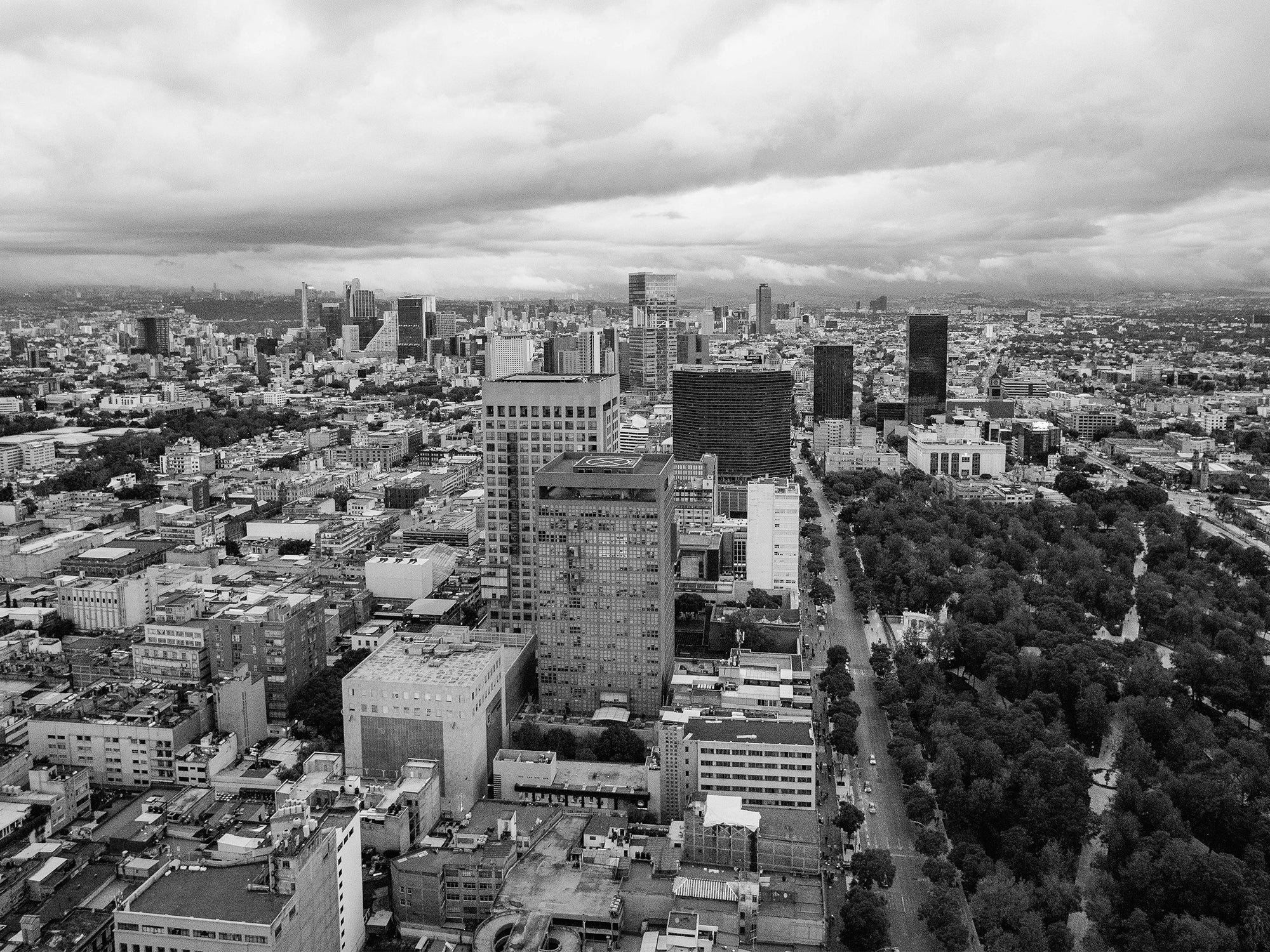
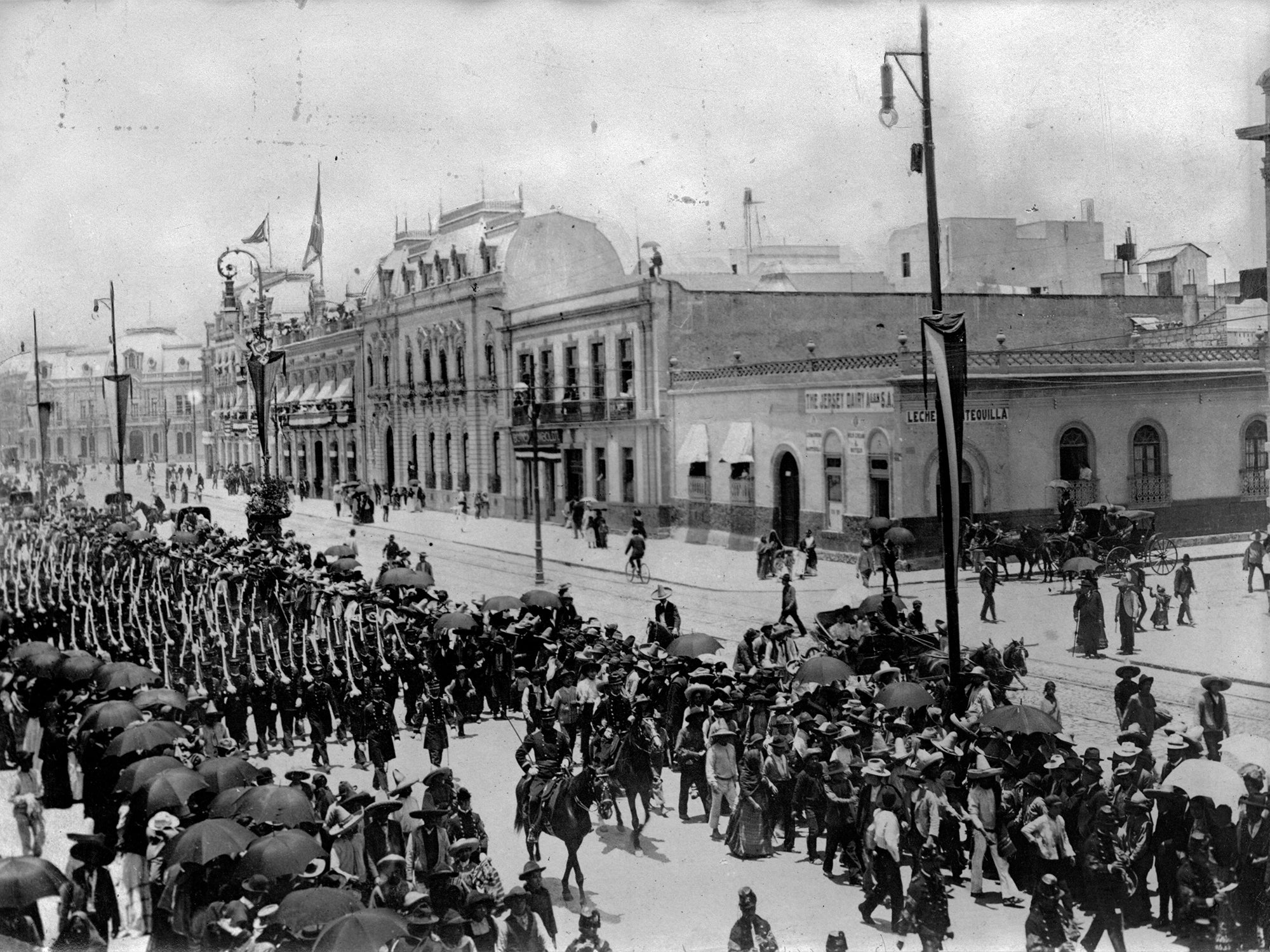
Second Layer
1910
Mexico City becomes the epicenter of revolutionary fervor as political unrest escalates. The controversial re-election of Porfirio Díaz sparks nationwide protests, led by Francisco Madero and other revolutionaries.
Decades of social inequality, land dispossession, and authoritarian rule fuel widespread discontent among peasants, workers, and intellectuals. The capital, though still expanding, becomes a battleground for competing political ideologies and revolutionary activity. Economic growth under Díaz continues, but the benefits remain concentrated among the elite, leaving much of the population in poverty. As tensions rise, the city’s newspapers, political rallies, and underground movements reflect a growing demand for democracy and reform. The revolution, ignited in rural areas, soon spreads to the heart of Mexico City, signaling the collapse of the Porfiriato.
The city braces for the turmoil that will reshape the nation's political and social landscape.
Third Layer
1876
Porfirio Díaz rises to power, beginning the Porfiriato era, a period of modernization and economic expansion. Mexico City transforms with new railroads, telegraph lines, and public infrastructure projects that enhance communication and transportation. The influence of European, particularly French, architecture reshapes the city, as grand avenues and opulent buildings redefine its landscape.
A growing middle class emerges, benefiting from industrial progress, though rural and working-class populations face increasing exploitation. Foreign investments fuel economic growth, particularly in mining and agriculture, but also deepen social inequality.
The city’s transformation into a cosmopolitan hub reflects its aspirations for global influence, yet political tensions simmer beneath the surface. While modernization accelerates, the stark divide between the elite and the poor sets the stage for future revolutionary movements.
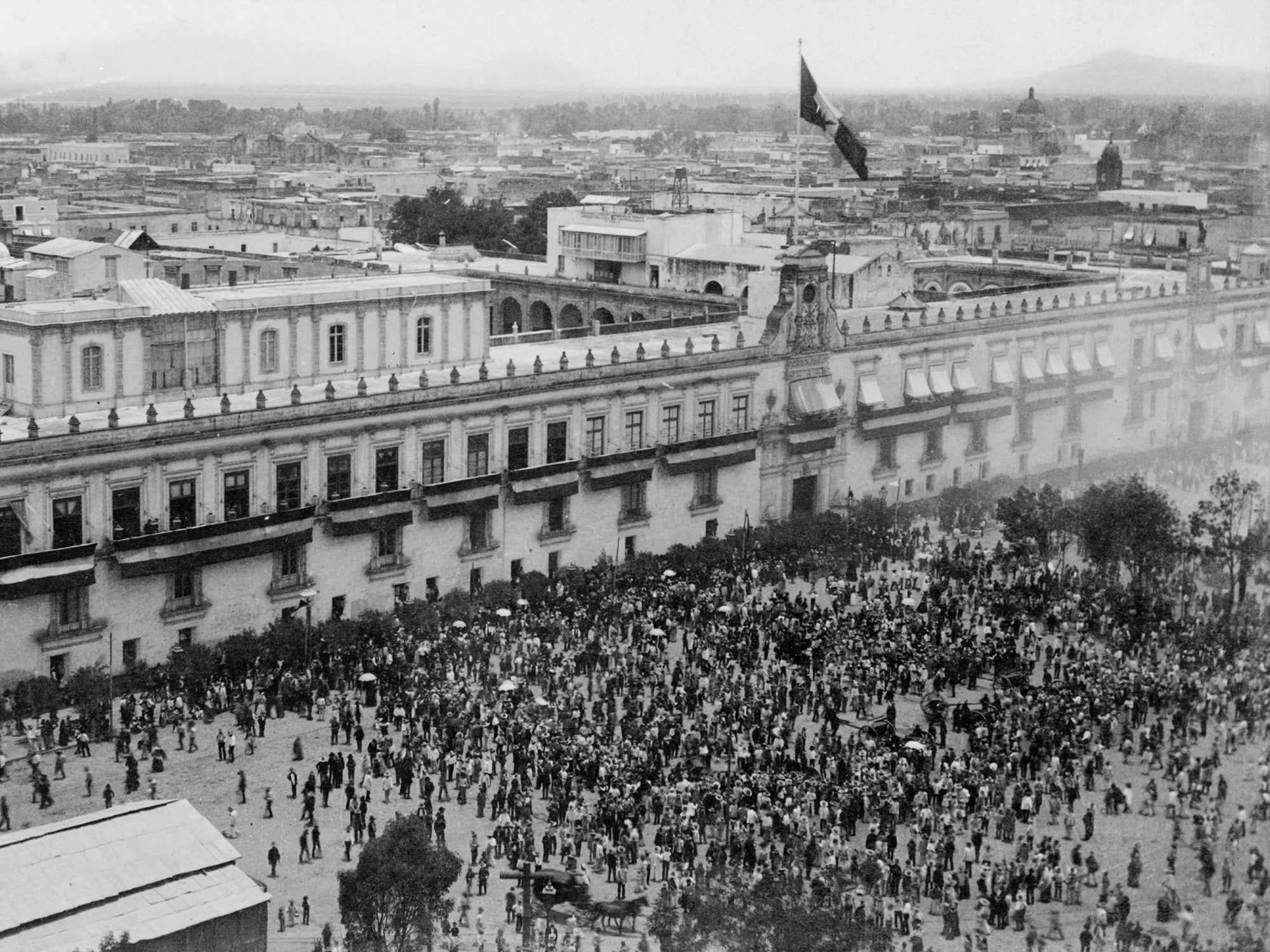
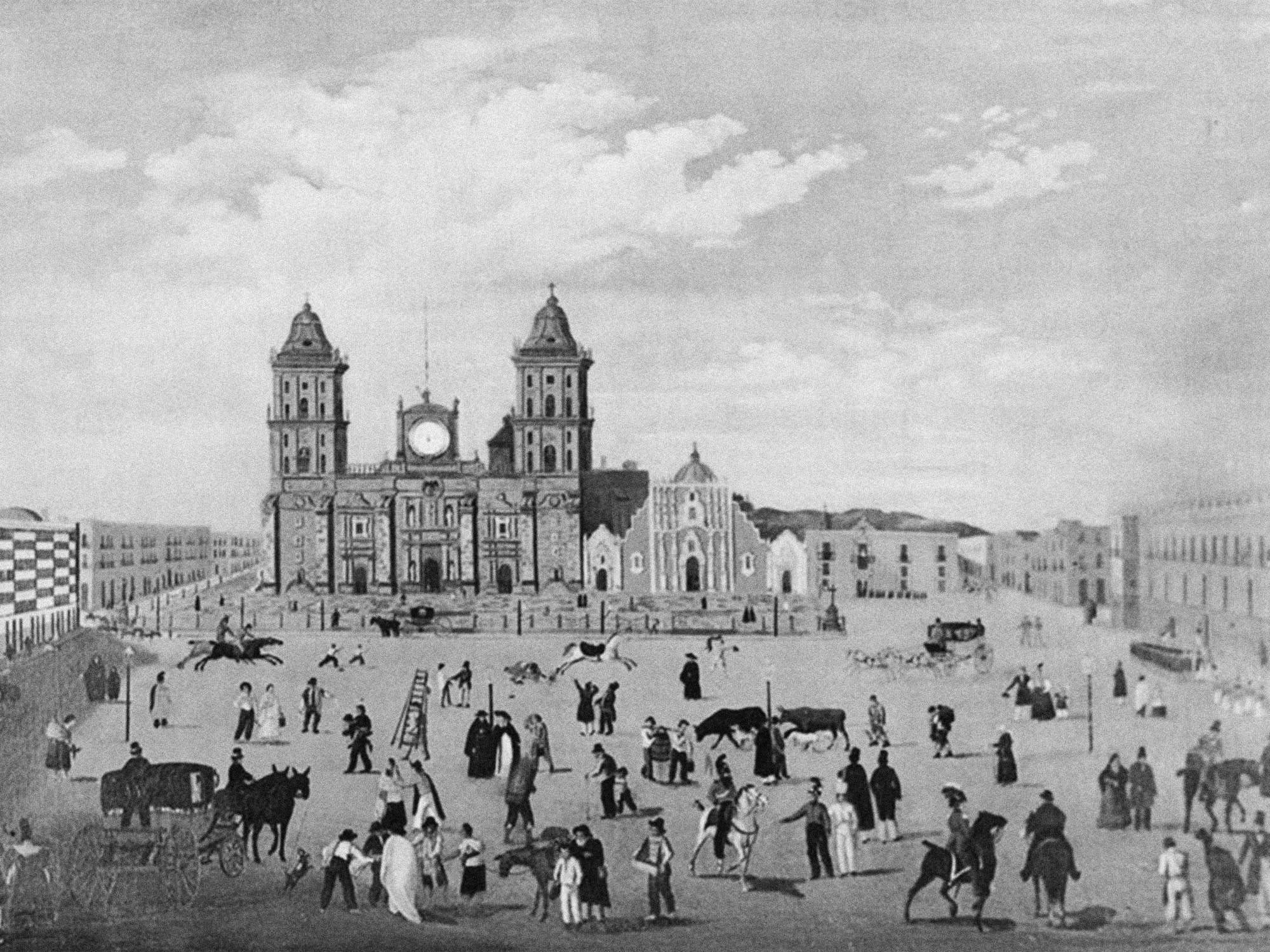
Bottom Layer
1780
Mexico City flourishes as the heart of New Spain, earning the nickname "City of Palaces" due to its grand mansions, churches, and public buildings. The wealth of the Spanish colonial elite is reflected in the city’s opulent architecture, influenced by Baroque and neoclassical styles.
As a political and economic hub, the city thrives with bustling markets, artisanal workshops, and a growing intellectual elite. Trade restrictions imposed by the Spanish Crown regulate commerce, while the Catholic Church maintains a powerful presence in daily life. Despite its grandeur, Mexico City faces deep social divides, with impoverished Indigenous and mestizo populations struggling under colonial rule.
The city's layout is defined by a rigid colonial grid, with plazas and religious institutions reinforcing Spanish authority. These stark inequalities and strict governance foreshadow the tensions that will eventually ignite independence movements.










